Imagine a world where gods and goddesses roamed the earth, heroes embarked on epic quests, and the boundaries between mortal and divine were blurred. Welcome to the fascinating realm of Mesopotamian myths, a collection of ancient Sumerian stories that offer a unique glimpse into the beliefs and culture of one of the world’s oldest civilizations. These captivating tales, passed down through generations, recount the creation of the world, the adventures of heroic figures, and the mysteries of the afterlife. From the legendary Epic of Gilgamesh to the dramatic Descent of Inanna, this article will delve into the rich tapestry of Mesopotamian mythology, uncovering its enduring influence on literature, art, and the broader Near Eastern cultures. Prepare to be enthralled as we journey through the enchanting realms of gods, goddesses, and ancient heroes.
Contents
- The Creation Myths
- The Gods and Goddesses
- The Heroic Sagas
- The Flood Myths
- The Afterlife and Underworld
- The Influence of Mesopotamian Myths
- Conclusion
-
Frequently Asked Questions
- What is the significance of the Epic of Gilgamesh in Mesopotamian mythology?
- How does the Enuma Elish explain the creation of the world?
- Who were the main gods and goddesses in Mesopotamian mythology?
- What is the story of Inanna and Dumuzid?
- Who was Enkidu in Mesopotamian mythology?
- What are the Flood Myths in Mesopotamian mythology?
- What is the significance of the Descent of Inanna in Mesopotamian mythology?
- How does Mesopotamian mythology influence literature and art today?
- What impact did Mesopotamian mythology have on near eastern cultures?
- What can we learn from Mesopotamian myths about the afterlife and the underworld?
- References
-
Frequently Asked Questions
- 1. What are Mesopotamian myths?
- 2. What are some famous Mesopotamian creation myths?
- 3. Who were the major gods and goddesses in Mesopotamian mythology?
- 4. What is the story of Inanna and Dumuzid?
- 5. Who was Enkidu in Mesopotamian mythology?
- 6. What is the story of the Epic of Atrahasis?
- 7. How did Mesopotamian myths influence literature and art?
- 8. What impact did Mesopotamian myths have on near-eastern cultures?
- 9. What does the Descent of Inanna reveal about Mesopotamian cosmology?
- 10. How did Mesopotamian myths shape our understanding of ancient history?
- References
- Read More
The Creation Myths
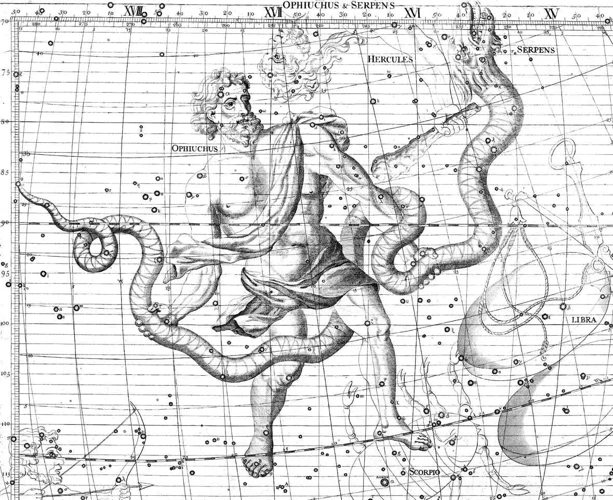
Mesopotamian mythology is rich with captivating creation myths that paint a vivid picture of how the world came into existence. One such myth is the famous Epic of Gilgamesh, which tells the story of Gilgamesh, the king of Uruk, and his quest for immortality. Through this epic, we discover how the gods created Gilgamesh as a powerful and wise ruler, but also as a flawed and mortal being. Another prominent creation myth is the Enuma Elish, also known as the Babylonian Creation Myth. This ancient text reveals the battle between the god Marduk and the primal goddess Tiamat, resulting in the creation of the world and the establishment of order. These creation myths offer intricate explanations for the origins of humanity, the natural world, and the divine hierarchy within Mesopotamian mythology. They provide insight into the beliefs and values of the ancient Sumerians, showcasing their reverence for the gods and their aspirations for understanding the mysteries of existence. Through these myths, we can glimpse the intricacies of the Mesopotamian worldview and the profound impact it had on their society and culture.
The Epic of Gilgamesh
The Epic of Gilgamesh is a mesmerizing tale that takes us on a heroic journey through the adventures and trials of Gilgamesh, the legendary king of Uruk. This ancient Sumerian epic, considered one of the oldest known works of literature, follows Gilgamesh’s quest for immortality after the death of his dear friend Enkidu. Fueled by grief and a desire to transcend mortality, Gilgamesh seeks answers from the wise immortal Utnapishtim, who survived the great flood and obtained eternal life. Along his arduous journey, Gilgamesh battles terrifying monsters, such as Humbaba and the Bull of Heaven, and encounters the enigmatic Siduri, the divine tavern keeper. Throughout the epic, themes of friendship, mortality, and the search for meaning are explored, showcasing the complexity and depth of Mesopotamian mythology. The Epic of Gilgamesh not only provides us with a thrilling adventure but also offers insights into the values and ideals of the ancient Sumerian culture, highlighting the importance of the divine, the fragility of human existence, and the eternal quest for immortality.
The Enuma Elish
The Enuma Elish, also known as the Babylonian Creation Myth, is an ancient Mesopotamian epic that holds a significant place in the pantheon of Mesopotamian myths. This remarkable tale provides us with a detailed account of the creation of the world and the establishment of order. The Enuma Elish begins with a primordial chaos represented by the deity Tiamat, symbolizing the saltwater ocean, and the god Apsu, representing the freshwater abyss. These divine beings give birth to younger gods, who eventually rebel against the tyranny of their parents. In a climactic battle, the god Marduk emerges as the champion of the younger gods. He defeats and slays Tiamat, dividing her body to create the heavens and the earth. Marduk then establishes order, organizing the cosmos with planets, stars, and seasons. The Enuma Elish emphasizes the supremacy of Marduk as the chief god, elevating him to the position of the head of the pantheon. This myth serves to justify the political and religious authority of Babylon by presenting Marduk as the rightful ruler of the universe. It also underscores the Mesopotamian belief in the primacy of order and the divine preservation of the cosmos. The Enuma Elish thus plays a crucial role in shaping the Mesopotamian understanding of creation and the role of gods in governing the world. It stands as a testament to the ancient Sumerian and Babylonian cultures’ admiration for cosmic order and their desire to explain the origins of life and the intricate workings of the universe.
The Gods and Goddesses

The pantheon of Mesopotamian gods and goddesses is vast and diverse, each deity holding a unique role and significance within the mythology. An overview of these Mesopotamian deities reveals a complex web of interconnected relationships and powers. At the top of the divine hierarchy stands An, the sky god, who controls the heavens and is associated with the concept of order. Enlil, the god of wind and storms, is often depicted as a powerful figure who assists in the creation and development of civilization. Ninurta, the warrior god, protects humanity from chaos and evil forces. Inanna, the goddess of love, fertility, and war, serves as a symbol of feminine strength and passion. We encounter Enki, the god of wisdom and water, who plays a pivotal role in several creation myths. Enki, along with the goddess Ninhursag, was responsible for the creation of humans, sculpting them from clay and imbuing them with the breath of life. This divine pantheon showcases the Mesopotamians’ reverence for the natural world and their belief in the omnipotence of their deities. As we delve into the stories and legends surrounding these gods and goddesses, we uncover a tapestry of power dynamics, feuds, and alliances that mirror the complexities of human society itself.
An Overview of Mesopotamian Deities
Mesopotamian mythology is replete with a vast pantheon of deities, each with their own unique powers, characteristics, and domains of influence. reveals a fascinating tapestry of gods and goddesses worshipped by the ancient Sumerians. The supreme god in the Mesopotamian pantheon is Anu, the ruler of the heavens, while his son Enlil governs the earth and the winds. Enheduanna, the first known author in history, was a high priestess devoted to the goddess Inanna, the Queen of Heaven and patroness of love, fertility, and war. Other notable deities include Utu, the sun god; Ninhursag, the mother goddess associated with fertility and childbirth; and Enki, the god of wisdom and water. These gods and goddesses form a complex interconnected web of power, embodying various aspects of life and the natural world. Their worship was an essential part of Mesopotamian society, with temples and rituals dedicated to their honor. Understanding the hierarchy and significance of these deities provides insight into the religious and spiritual beliefs of the ancient Sumerians and their reverence for the divine forces that influenced their daily lives.
Enki and Ninhursag: The Creation of Humans
The myth of Enki and Ninhursag is a captivating tale within Mesopotamian mythology that explores the creation of humans. Enki, the god of wisdom and freshwater, plays a central role in this myth. According to the story, Enki was tasked with creating humans to alleviate the burdens of the gods and ensure the continuation of civilization. In his efforts, Enki sought the aid of Ninhursag, the goddess of fertility and birth. Together, they shaped humans out of clay, infused them with the essence of life, and breathed vitality into their existence. In some versions of the myth, Ninhursag’s womb becomes the source of all life, highlighting the sacred connection between creation and birth. Through this myth, the ancient Mesopotamians sought to explain not only the origins of humanity but also the delicate balance between the divine and mortal realms. It showcases the divine craftsmanship involved in the creation of humans and emphasizes the interdependence between gods and their creations. The myth of Enki and Ninhursag offers a unique perspective on the revered status of humans within Mesopotamian society, as well as their role as stewards of the earth.
The Heroic Sagas
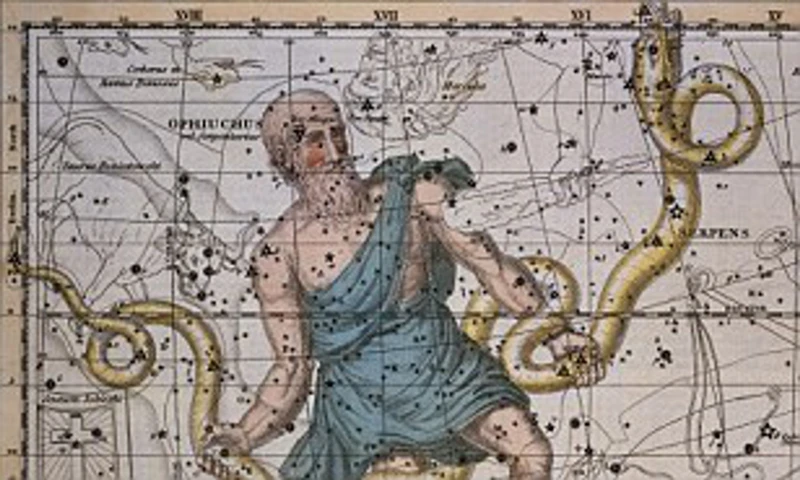
The Mesopotamian myths are not just limited to creation stories, but also encompass a rich collection of heroic sagas that showcase the bravery, adventures, and challenges faced by legendary figures. One prominent saga is the tale of Inanna and Dumuzid: The Descent to the Underworld, which chronicles the descent of the goddess Inanna into the realm of the dead to rescue her beloved Dumuzid. This myth explores themes of love, sacrifice, and the cyclical nature of life and death. Another fascinating saga revolves around the character of Enkidu, the Wild Man and Companion of Gilgamesh. Enkidu is a primal being created by the gods to counterbalance the arrogance and cruelty of Gilgamesh. Together, they embark on epic quests and face numerous trials, ultimately teaching us lessons about friendship, mortality, and the human condition. These heroic sagas not only provide exciting narratives but also offer profound insights into the values and ideals of the ancient Mesopotamian civilization. Through these mythic tales, we are transported into a world of mythical heroes, supernatural beings, and timeless quests, allowing us to marvel at the enduring human fascination with legendary adventures and the enduring power of storytelling.
Inanna and Dumuzid: The Descent to the Underworld
The Mesopotamian myth of is a captivating tale that explores the cycle of life and death. Inanna, the goddess of love, fertility, and war, embarks on a journey to the underworld to witness the funeral rites of her sister’s husband, Dumuzid. Before descending, she instructs her loyal servant, Ninshubur, to seek help from the other gods should she not return within three days. As Inanna enters the underworld, she navigates through seven gates, divesting herself of her regal garments and precious adornments as she descends deeper into the realm of the dead. Ultimately, Inanna is met by the underworld goddess, Ereshkigal, who unleashes a series of gruesome punishments upon her. Inanna is eventually rescued by her loyal servant, who seeks aid from the god Enki. Through a clever plan, Enki revives Inanna and replaces her with her husband Dumuzid, who is then condemned to spend half the year in the underworld. This myth symbolizes the changing of seasons and the eternal cycle of life and death. Its intricate narrative and vivid imagery showcase the Mesopotamians’ contemplation of mortality and their belief in the continuity of life beyond the realm of the living. To delve deeper into the fascinating world of astrological compatibility, check out our article on Ophiuchus and Taurus Love Compatibility.
Enkidu: The Wild Man and Companion of Gilgamesh
In the fascinating realm of Mesopotamian mythology, one of the most compelling characters is Enkidu, the wild man and loyal companion of Gilgamesh. Enkidu’s story begins when Gilgamesh, a powerful king in Uruk, learns about Enkidu’s existence and seeks him out in the wilderness. Enkidu, who lived amongst the animals, possesses incredible strength and a deep connection with nature. When they finally meet, Enkidu and Gilgamesh engage in a fierce battle that ultimately leads to mutual respect and friendship. Together, they embark on numerous adventures, including the quest to slay the monstrous Humbaba and the pursuit of eternal life. The bond between Enkidu and Gilgamesh is central to the Epic of Gilgamesh, emphasizing the importance of friendship, loyalty, and the human experience. Enkidu, initially a wild and untamed creature, undergoes a transformation, becoming civilized and gaining wisdom as he interacts with Gilgamesh and navigates the challenges they face together. The tale of Enkidu serves as a reflection of the human condition and the journey towards self-discovery and growth. Through Enkidu’s character, we gain a deeper understanding of the complexities of Mesopotamian beliefs and the role of mythology in exploring the fundamental questions of human existence.
The Flood Myths
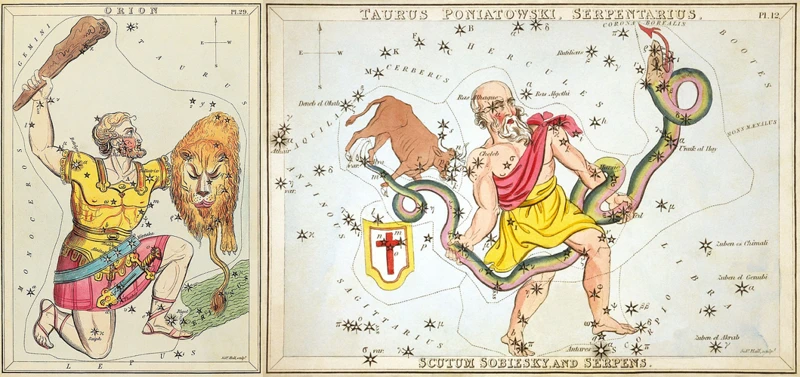
The flood myths of Mesopotamia hold a prominent place in the rich tapestry of ancient Sumerian tales. One of the most well-known flood stories is found in the Epic of Atrahasis. This myth recounts the story of Atrahasis, a wise and pious king who, with the guidance of the god Enki, builds a massive ark to survive a catastrophic flood sent by the gods to wipe out humanity. This narrative bears striking similarities to the biblical story of Noah’s Ark, highlighting the enduring influence of Mesopotamian mythology on later cultures. Another significant flood myth is the Sumerian King List, which incorporates the deluge as a pivotal event in human history. This text lists the reigns of the legendary kings who ruled before and after the great flood. The flood myths of Mesopotamia serve as cautionary tales, emphasizing the power of the gods and the consequences of human behavior. They also showcase the ancient Sumerians’ desire to make sense of natural disasters and their perception of divine intervention in the affairs of mortals. Through these stories, we gain a deeper understanding of the Mesopotamian worldview and their beliefs about the cyclical nature of life and the immense forces that govern the world.
The Epic of Atrahasis
The Epic of Atrahasis is another intriguing myth from ancient Mesopotamia that delves into the concept of a great flood and its significance in the development of humanity. This epic tells the story of Atrahasis, a wise king who is chosen by the gods to survive a catastrophic flood that is meant to wipe out humanity. The myth describes how the gods, disturbed by the noise and overpopulation caused by humans, unleash a flood upon the earth as a means of divine punishment. However, through the guidance of the god Ea, Atrahasis builds a massive boat and gathers pairs of animals to escape the impending deluge. After the flood subsides, Atrahasis and his companions emerge and reestablish civilization. The Epic of Atrahasis brings to light the complex relationship between gods and humans, highlighting the giving of knowledge and divine protection to chosen individuals. It also showcases the Mesopotamian belief in the cyclical nature of life, where destruction and rebirth are intertwined. This myth may serve as a precursor to the famous biblical story of Noah’s Ark, further emphasizing the widespread influence of Mesopotamian myths on later civilizations. To read more about the intriguing traits and career choices related to astrology, check out this article!
The Sumerian King List
The Sumerian King List is a remarkable historical document that provides valuable insights into the ancient Sumerian civilization and its system of governance. This ancient list, written on clay tablets, presents a comprehensive record of the kings who ruled over various Sumerian city-states. It spans a vast period of time, from mythical rulers and early dynasties to the time when kingship was centralized in the city of Kish. The King List serves as an important chronicle, cataloging the reigns of both legendary and historical figures. It not only includes well-known rulers such as Gilgamesh, but also sheds light on lesser-known kings who played significant roles in shaping Sumerian history. The document also highlights the succession patterns and inter-relationships between different royal houses, providing a glimpse into the political complexities of the time. The Sumerian King List serves as a crucial source for reconstructing the early history of Mesopotamia and understanding the development of kingship as a central institution within Sumerian society. Through the names and reign lengths recorded in this list, historians have been able to piece together a more comprehensive picture of the ancient Sumerian civilization and its rulers. For those fascinated by the origins of civilizations, the Sumerian King List offers a fascinating window into the past, unravelling the regal lineage of one of the oldest known civilizations on earth.
The Afterlife and Underworld
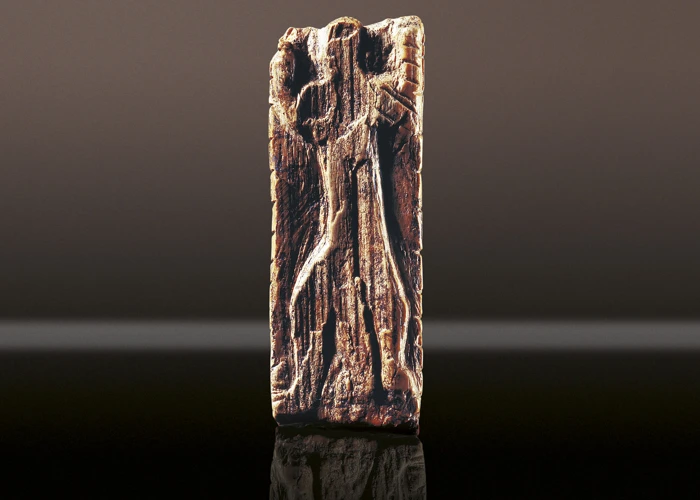
The concept of the afterlife and the underworld held great importance in Mesopotamian mythology. One prominent tale that explores this realm is the Descent of Inanna. In this myth, the goddess Inanna journeys to the underworld, facing various trials and challenges along the way. This narrative serves as a metaphorical exploration of death and rebirth, shedding light on the Mesopotamian belief in an afterlife and the cyclical nature of existence. Another fascinating account is the Journey of Ut-Napishtim, found in the Epic of Gilgamesh. Ut-Napishtim, a mortal who achieved immortality, recounts his journey through the treacherous waters to obtain eternal life. This narrative offers insights into the Mesopotamian understanding of the afterlife and the pursuit of immortality. The Mesopotamians believed that after death, souls would descend to the netherworld, an underground realm ruled by the goddess Ereshkigal. The precise nature and structure of the underworld varied across different Mesopotamian cultures and time periods, but it typically involved various levels or chambers. It was believed that one’s actions in life and the rituals performed after death determined the fate of the soul in the afterlife. These beliefs in the afterlife and the underworld played a significant role in shaping the Mesopotamian culture, influencing their funeral practices, religious ceremonies, and moral codes. The exploration of the afterlife in Mesopotamian mythology offers a fascinating insight into their worldview and the quest for understanding the mysteries of existence.
The Descent of Inanna
One of the most captivating sagas in Mesopotamian mythology is . In this ancient Sumerian myth, Inanna, the goddess of love, beauty, and fertility, embarks on a daring journey to the underworld. Driven by her curiosity and desire for power, she travels through seven gates, relinquishing different aspects of her divine identity at each one of them. The Descent of Inanna is a tale of sacrifice, rebirth, and the cyclical nature of life. As Inanna descends into the realm of the dead, she experiences the torment and trials of the underworld, ultimately leading to her death. However, she is eventually resurrected and returns to the land of the living. This myth highlights Inanna’s power and resilience in the face of darkness and speaks to the Mesopotamians’ beliefs about the interconnectedness of life, death, and rebirth. It also serves as a reminder of the inherent risks and consequences of seeking knowledge and power. The Descent of Inanna has inspired countless interpretations and has been linked to the concept of the dying and resurrecting god or goddess found in other mythologies around the world. Its enduring relevance and universal themes make it a truly remarkable and thought-provoking tale from ancient Sumerian culture.
The Journey of Ut-Napishtim
The Journey of Ut-Napishtim is a mesmerizing tale within Mesopotamian mythology that revolves around the concept of immortality. In this myth, Ut-Napishtim, a wise and virtuous man, is chosen by the god Ea to escape the impending flood and preserve humanity. Similar to the biblical story of Noah’s Ark, Ut-Napishtim constructs a massive boat, filling it with various animals and his family. As the flood engulfs the world, Ut-Napishtim and his companions navigate the treacherous waters for six days and nights. After the flood subsides, Ut-Napishtim finds himself on the summit of a mountain, where he offers sacrifices to the gods. Impressed by his faith and ingenuity, the gods grant Ut-Napishtim and his wife immortality, making them the only humans to attain such a status. The Journey of Ut-Napishtim showcases the Mesopotamians’ fascination with immortality and their desire to understand the mysteries of life and death. It serves as a reminder of the enduring human quest for eternal life and the importance of faith and divine intervention in the face of catastrophe. Through this myth, we gain a deeper understanding of the Mesopotamian worldview, their spiritual beliefs, and the significance they placed on the afterlife and the gods’ favor.
The Influence of Mesopotamian Myths
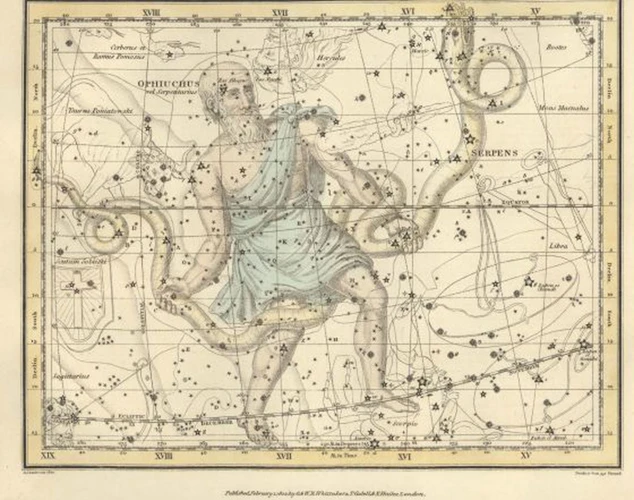
The influence of Mesopotamian myths extends far beyond the ancient Sumerian civilization, leaving a lasting imprint on literature, art, and the broader Near Eastern cultures. These myths served as a foundation for future storytelling and religious beliefs, inspiring subsequent works of literature and plays. The renowned Epic of Gilgamesh, with its themes of heroism, mortality, and the search for meaning, has been compared to other epic tales like the Odyssey and the Iliad. Mesopotamian myths provided inspiration for artistic representations, such as the depiction of gods and goddesses in sculptures and relief carvings. These artistic endeavors aimed to capture the power and divinity of the ancient deities. When considering the broader impact, it becomes evident that Mesopotamian myths played a significant role in shaping the religious and cultural practices of neighboring civilizations. They influenced the development of religious systems throughout the ancient Near East, including the Babylonians and Assyrians. The legacy of Mesopotamian myths can also be seen in the mythological traditions of subsequent cultures, such as the similarities between the Enuma Elish and the creation stories found in other ancient societies. This enduring influence speaks to the enduring power and significance of Mesopotamian mythology in shaping the cultural and artistic landscape of the ancient world and beyond.
Legacy in Literature and Art
The Mesopotamian myths have left a profound and lasting impact on literature and art throughout history. Their influence can be seen in various literary works and artistic representations. One notable example is the Epic of Gilgamesh, which is often regarded as one of the first great works of world literature. Its themes of heroism, friendship, and the search for immortality have resonated with countless writers and readers across generations. The epic has inspired numerous adaptations, translations, and reinterpretations, reaffirming its enduring legacy. In art, Mesopotamian myths have provided inspiration for intricate and detailed reliefs, sculptures, and engravings. These artistic depictions often portray the gods and heroes of Mesopotamian mythology, capturing their power, majesty, and divine attributes. The artistic representations serve as visual narratives, bringing these ancient myths to life and providing a glimpse into the beliefs and cultural practices of the ancient Sumerians. The Mesopotamian myths continue to be a wellspring of inspiration for contemporary artists and writers, ensuring that their legacy remains vibrant and relevant in the world of literature and art.
Impact on Near Eastern Cultures
The impact of Mesopotamian myths extends far beyond the ancient Sumerian civilization. These myths, with their intricate narratives and compelling characters, have left a lasting impression on the cultures of the Near East. One major influence can be seen in the religious beliefs and practices of neighboring civilizations such as the Babylonians and Assyrians. The Enuma Elish, for instance, served as a foundation for Babylonian religious rituals and ceremonies. The gods and goddesses of Mesopotamian mythology were adopted and adapted, and many of their attributes and roles were incorporated into the pantheons of other societies. Additionally, the heroic sagas of Mesopotamia, such as the Epic of Gilgamesh, inspired other epic tales and legends throughout the region. These stories showcased themes of heroism, friendship, and the search for immortality, which resonated with audiences and influenced the storytelling traditions of neighboring cultures. The influence of Mesopotamian myths can even be traced to the present day, as elements of these ancient stories can be found in later mythologies and folklore, highlighting their enduring impact on human storytelling and collective imagination. To explore the fascinating origins of another rich mythological tradition, take a look at our article on “uncovering the origins of Celtic mythology”.
Conclusion
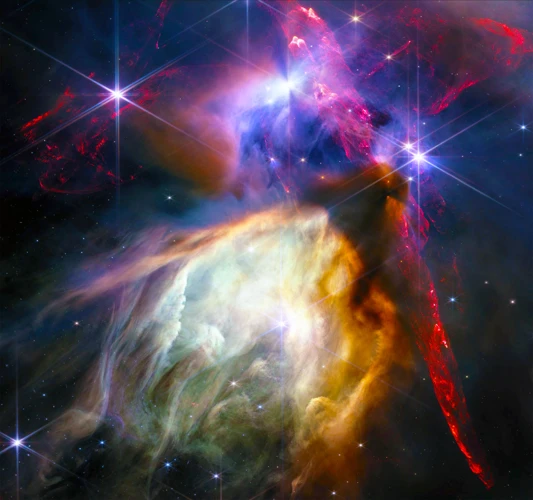
In conclusion, the Mesopotamian myths, particularly those centered around creation, gods and goddesses, heroic sagas, flood myths, and the afterlife, offer a captivating glimpse into the ancient Sumerian civilization. These myths serve as a testament to the rich imagination, complex beliefs, and cultural values of the Mesopotamian people. Through the Epic of Gilgamesh, we witness the struggles and aspirations of humanity, while the Enuma Elish reveals the grandeur and power of the gods. The stories of Inanna, Dumuzid, and Enkidu shed light on themes of love, sacrifice, and companionship, resonating with universal human experiences. The Flood myths, such as the Epic of Atrahasis and the Sumerian King List, highlight the awe-inspiring forces of nature and the fragile balance between mortals and the divine. The Descent of Inanna and the Journey of Ut-Napishtim reveal the Mesopotamian concepts of the afterlife and the underworld, offering deep insights into their beliefs regarding the human soul and its fate beyond death. The enduring legacy of Mesopotamian myths can be seen in the influence they have had on subsequent literature, art, and the cultures of the Near East. These ancient stories continue to inspire and captivate, reminding us of the timeless power of mythological storytelling. As we unravel the mysteries of the Mesopotamian world, we gain a deeper appreciation for the origins of human imagination and the diverse tapestry of human belief systems throughout history. To further explore the origins of mythology, one can delve into the fascinating realm of Celtic mythology, another rich and enchanting tapestry that offers unique insights into ancient civilizations and their understanding of the world.
Frequently Asked Questions
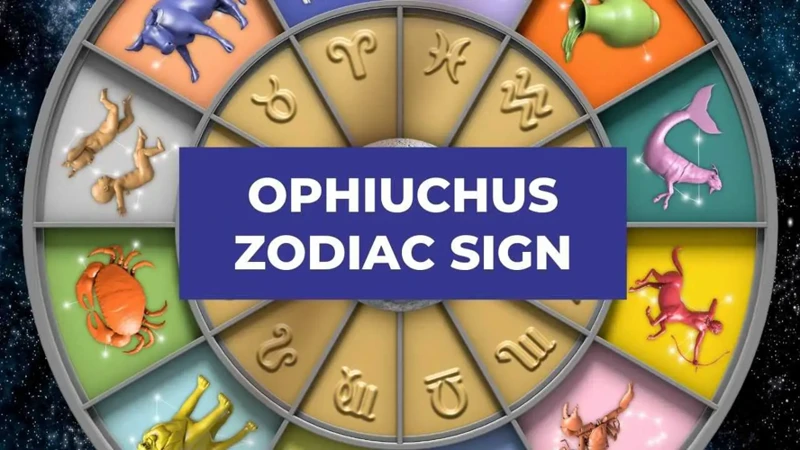
What is the significance of the Epic of Gilgamesh in Mesopotamian mythology?
The Epic of Gilgamesh is an ancient Mesopotamian text that holds great significance in the realm of mythology. It is considered one of the earliest known works of literature, exploring themes such as mortality, heroism, and the search for immortality.
How does the Enuma Elish explain the creation of the world?
The Enuma Elish is a Babylonian creation myth that recounts a cosmic battle between the god Marduk and the primal goddess Tiamat. Marduk’s victory leads to the creation of the world, with Marduk establishing order and becoming the supreme deity.
Who were the main gods and goddesses in Mesopotamian mythology?
Mesopotamian mythology features a vast pantheon of gods and goddesses. Some notable ones include Anu, the god of the heavens; Enlil, the god of the wind and storms; and Inanna, the goddess of love and fertility.
What is the story of Inanna and Dumuzid?
Inanna and Dumuzid’s story tells of Inanna’s descent to the underworld to visit her sister Ereshkigal. Dumuzid, who is Inanna’s lover, faces challenges and trials while Inanna navigates the treacherous underworld. This tale explores themes of love, sacrifice, and the cycles of life and death.
Who was Enkidu in Mesopotamian mythology?
Enkidu was a wild man created by the gods to be a companion to Gilgamesh, the legendary king of Uruk. Enkidu was initially a feral creature but became Gilgamesh’s loyal friend and embarked on numerous heroic adventures together.
What are the Flood Myths in Mesopotamian mythology?
The Flood Myths are ancient Mesopotamian stories that recount a catastrophic flood sent by the gods to wipe out humanity. These myths bear similarities to the story of Noah’s Ark in biblical mythology and reflect the consequences of human transgressions.
What is the significance of the Descent of Inanna in Mesopotamian mythology?
The Descent of Inanna is a myth that reveals the journey of the goddess Inanna through the seven gates of the underworld. This tale underscores the power dynamics between the divine realms and explores themes of mortality, resurrection, and the limits of divine authority.
How does Mesopotamian mythology influence literature and art today?
Mesopotamian mythology continues to inspire contemporary literature and art. Its themes of heroism, creation, and the human condition resonate with modern audiences, and its iconic characters and symbols find their way into various forms of artistic expression.
What impact did Mesopotamian mythology have on near eastern cultures?
Mesopotamian mythology had a profound impact on neighboring cultures in the ancient Near East. Its myths and religious beliefs often spread and influenced the beliefs and practices of other civilizations, contributing to a shared heritage and shaping the development of subsequent mythologies in the region.
What can we learn from Mesopotamian myths about the afterlife and the underworld?
Mesopotamian myths provide insights into the ancient beliefs surrounding the afterlife and the underworld. Stories such as the Descent of Inanna and the Journey of Ut-Napishtim shed light on concepts of death, judgment, and the possibility of attaining immortality or achieving a transient existence beyond death.
References
- Ancient Mesopotamia Myths, Stories, and Legends for Kids
- Mesopotamian Mythology 101: The Ultimate Guide
Frequently Asked Questions

1. What are Mesopotamian myths?
Mesopotamian myths are a collection of ancient stories and legends that originated in the region known as Mesopotamia, which corresponds to present-day Iraq and parts of Iran, Syria, and Turkey. These myths were an integral part of the religious and cultural beliefs of the ancient Sumerians, Babylonians, and other civilizations that thrived in the area.
2. What are some famous Mesopotamian creation myths?
Two famous Mesopotamian creation myths are the Epic of Gilgamesh and the Enuma Elish. The Epic of Gilgamesh recounts the adventures of Gilgamesh, a legendary king of Uruk, while the Enuma Elish describes the creation of the universe by the god Marduk, who defeats the primeval goddess Tiamat.
3. Who were the major gods and goddesses in Mesopotamian mythology?
There were numerous gods and goddesses in Mesopotamian mythology, but some of the major ones include Enki, the god of wisdom; Ninhursag, the earth mother goddess; Inanna, the goddess of love and war; and Marduk, the chief god of Babylon.
4. What is the story of Inanna and Dumuzid?
The story of Inanna and Dumuzid is a tragic tale of love and death. Inanna, the goddess of love, descends to the underworld to visit her sister Ereshkigal. During her absence, Dumuzid, her husband and lover, fails to mourn for her. As a result, he is captured by demons and forced to take his place in the underworld for half the year, while Inanna returns to the land of the living.
5. Who was Enkidu in Mesopotamian mythology?
Enkidu is a central character in the Epic of Gilgamesh. He is described as a wild man created by the gods to counterbalance the power and arrogance of Gilgamesh, the king of Uruk. Enkidu eventually becomes Gilgamesh’s trusted companion and together they embark on heroic adventures.
6. What is the story of the Epic of Atrahasis?
The Epic of Atrahasis is an ancient Mesopotamian myth that tells the story of a great flood similar to the biblical story of Noah’s Ark. In this myth, the gods decide to send a flood to wipe out humankind due to their noisy and unruly behavior. However, one man named Atrahasis is warned by the god Enki and manages to survive by building a large boat.
7. How did Mesopotamian myths influence literature and art?
Mesopotamian myths had a significant influence on literature and art throughout history. Their themes, characters, and motifs can be seen in later works such as the Epic of Gilgamesh’s influence on the flood story in the biblical Book of Genesis. Additionally, Mesopotamian myths inspired the art of ancient civilizations, with depictions of gods, goddesses, and heroic figures appearing in sculptures, reliefs, and pottery.
8. What impact did Mesopotamian myths have on near-eastern cultures?
Mesopotamian myths had a profound impact on neighboring cultures in the Near East. As the civilizations of Mesopotamia interacted with others through trade and conquest, their myths and religious beliefs spread to regions such as Egypt, Anatolia, and the Levant, influencing the development of those societies’ own mythology and religious practices.
9. What does the Descent of Inanna reveal about Mesopotamian cosmology?
The Descent of Inanna is a myth that reveals the Mesopotamians’ understanding of the afterlife and the concept of the underworld. It depicts Inanna’s journey through the seven gates of the underworld and her eventual resurrection. This myth suggests a belief in a complex afterlife realm with different levels of existence and a cyclical view of life and death.
10. How did Mesopotamian myths shape our understanding of ancient history?
Mesopotamian myths provide valuable insights into the beliefs, values, and social structures of ancient civilizations. They shed light on the religious practices, worldview, and cultural development of the Sumerians, Babylonians, and other societies that flourished in Mesopotamia. These myths help us comprehend the complexities of ancient history and the profound impact that mythology had on shaping the ancient world.






